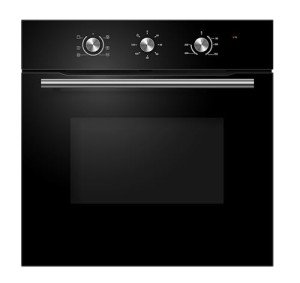The Ultimate Guide to Built-in Ovens: Enhancing Your Kitchen Experience
Built-in ovens have become a popular option in modern kitchen areas, providing a blend of performance, design, and convenience. Unlike traditional freestanding ovens, built-in ovens are integrated flawlessly into cabinetry, offering a structured look that can boost the visual appeal of any kitchen. This article explores the various kinds of built-in ovens, their benefits, setup considerations, and upkeep pointers.
Comprehending Built-in Ovens
Built-in ovens are designed to be installed directly into kitchen cabinets, permitting a more tailored kitchen setup. They typically are available in two primary types: single and double ovens.
Kinds Of Built-in Ovens
- Single Ovens: These systems use one cooking compartment, suitable for smaller sized kitchens or homes where cooking needs are modest.
- Double Ovens: As the name suggests, these units include two separate cooking compartments, enabling users to cook multiple dishes at various temperature levels concurrently. This is especially helpful for large households or those who frequently entertain visitors.
- Steam Ovens: These ovens prepare food utilizing steam, which can assist keep wetness and nutrients. Steam ovens are getting popularity due to their health advantages.
- Mix Ovens: These flexible appliances combine the functions of a routine oven and a microwave, making them ideal for fast cooking and reheating.
Secret Features to Look For
When thinking about a built-in oven, there are numerous functions that can enhance your cooking experience:
- Smart Technology: Many contemporary built-in ovens come equipped with smart technology, permitting users to manage their oven remotely through smartphone apps. Ovens And Hobs consist of preheating the oven, changing cooking times, and keeping track of cooking development.
- Self-Cleaning Functions: Built-in ovens with self-cleaning capabilities can save effort and time in kitchen maintenance.
- Convection Heating: This function flows hot air for even cooking, making it ideal for baking.
- Safety Features: Look for designs geared up with functions like cool-to-the-touch oven doors and automated shut-off alternatives for included security.
Advantages of Built-in Ovens
Aesthetic Appeal: Built-in ovens supply a streamlined and contemporary look that can boost the overall design of a kitchen. They can be incorporated into kitchen cabinetry, making them less invasive than freestanding models.
Area Efficiency: Built-in ovens enhance kitchen space, especially in smaller sized cooking areas where every inch counts. They can be positioned at eye level, making it simpler to keep an eye on cooking without bending down.
Boosted Functionality: With their innovative functions, built-in ovens use improved cooking experiences and increased performance compared to traditional ovens.
Setup Considerations
Setting up a built-in oven requires careful preparation and consideration. Here are some essential points to keep in mind:
- Space Requirements: Ensure that the picked oven fits comfortably into the available cabinet space. Step the measurements accurately, representing ventilation and clearance requirements.
- Electrical Requirements: Built-in ovens usually require a devoted electrical circuit. Seek advice from an electrical contractor for proper installation.
- Ventilation: Proper ventilation is vital for optimum oven performance. Confirm that the installation area has adequate ventilation to prevent overheating and guarantee safe operation.
- Professional Installation: While DIY installation may seem appealing, getting the assistance of an expert can make sure that the oven is set up correctly and safely.
Installation Steps
| Setup Step | Description |
|---|---|
| Action 1: Measure | Step the cabinet opening for your oven. |
| Step 2: Prepare | Prepare the electric outlet and ventilation choices. |
| Step 3: Connect | Link the oven to power, making sure all security procedures are complied with. |
| Step 4: Secure | Protect the oven within the kitchen cabinetry, utilizing appropriate screws and brackets. |
| Step 5: Test | Run a test to make sure the oven is functioning appropriately. |
Upkeep Tips
Regular upkeep can extend the life of your built-in oven and make sure optimal efficiency. Here are some maintenance pointers:
- Clean Regularly: Wipe down the oven outside and tidy the interior frequently. Use self-cleaning functions where offered.
- Check Seals: Ensure that door seals are intact to keep efficiency and cooking efficiency.
- Monitor Performance: Pay attention to how your oven functions-- if you observe unequal cooking or unusual noises, it might need professional servicing.
- Follow Manufacturer Guidelines: Always abide by the maintenance guidelines provided by the maker. This can help avoid problems and ensure that service warranties remain valid.
Frequently Asked Questions about Built-in Ovens
What is the difference between a built-in oven and a freestanding oven?
- Built-in ovens are integrated into cabinets, using a structured look, while freestanding ovens are standalone appliances that can be placed anywhere in the kitchen.
Do built-in ovens need more maintenance than routine ovens?
- Not always. Maintenance depends upon use and cleaning practices more than the kind of oven. Regular care is vital for all ovens.
Can I install a built-in oven myself?
- While it is possible to install a built-in oven yourself, it is suggested to work with an expert to guarantee safe and precise setup, especially concerning electrical requirements.
What are the typical costs of built-in ovens?
- Expenses can differ substantially based on brand, features, and requirements. Fundamental designs may start around ₤ 800, while high-end models can exceed ₤ 3,000.
Are built-in ovens energy-efficient?
- Lots of modern built-in ovens are designed to be energy-efficient. Search for models with an ENERGY STAR certification for the best performance.
In conclusion, built-in ovens are an outstanding addition to any modern kitchen, integrating visual appeals with functionality. By comprehending the various kinds of built-in ovens, their functions, and the associated setup and upkeep requirements, homeowners can make an educated decision that boosts their cooking experience and overall kitchen design. As cooking technology develops, built-in ovens are likely to play an integral function in the future of home cooking areas, guaranteeing delicious meals are prepared with ease and convenience.

